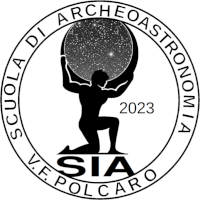Speaker
Description
Sommario: I calendari agricoli antichi che conosciamo utilizzano il sorgere e tramontare eliaco e acronico di alcune stelle e asterismi, oltre ai riferimenti fondamentali costituiti dai solstizi, quali indicatori delle date per specifiche attività agricole. Nella lezione si menzioneranno i criteri seguiti negli ultimi decenni per stimare le date dei fenomeni
eliaci e acronici. Si effettuerà una rassegna degli autori classici (Greci e Latini) che hanno discusso di agricoltura e botanica, e dei quali ci sono stati trasmessi i testi che includono indicazioni calendariali basate sugli astri. Si inizierà con Esiodo (VIII sec. a.C.) e si ricorderanno Teofrasto, Catone il Censore, Varrone, Virgilio, Columella, Plinio, fino a
Geoponica (X sec. d.C.), con un’integrazione costituita dai parapegma nell’appendice all’Isagoge di Gemino. Non saranno discussi ma soltanto menzionati i problemi legati ai diversi sistemi calendariali in uso nella società civile.
La lezione sarà tenuta in italiano
Abstract: In the ancient farming calendars, in addition to the fundamental reference given by the solstices, there are
the heliacal and achronic rising and setting of stars and asterisms as indicators of the date for specific farming
activities. We will mention the criteria that were adopted in the last decades for estimating the date of heliacal and achronic phenomena. A review will be given of classical (Greek and Latin) authors that dealt with farming and botany, and whose existing texts include calendric indications that are based on the stars. We will begin with Hesiod (VIII century BC), we will mention Theophrastus, Cato, Varro, Virgil, Columella, Pliny, up to Geoponica (X century CE), and we will include a discussion of the parapegma in the appendix to the Isagoge by Geminus. The problems related
to the various calendric systems adopted by the civil society will be only mentioned.

